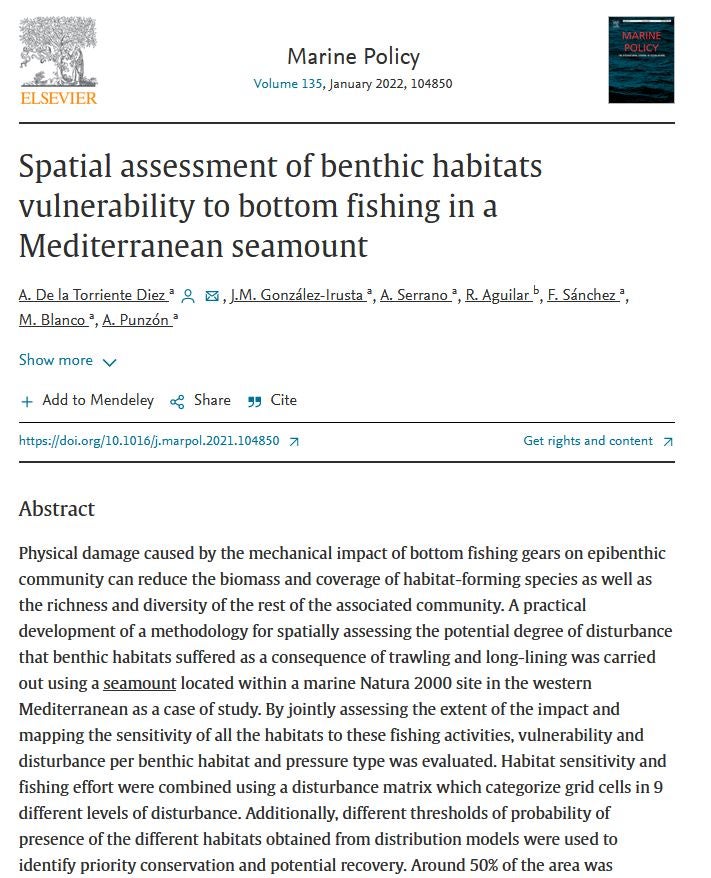Report | January 17, 2022
Spatial assessment of benthic habitats vulnerability to bottom fishing in a Mediterranean seamount

Abstract
Physical damage caused by the mechanical impact of bottom fishing gears on epibenthic community can reduce the biomass and coverage of habitat-forming species as well as the richness and diversity of the rest of the associated community. A practical development of a methodology for spatially assessing the potential degree of disturbance that benthic habitats suffered as a consequence of trawling and long-lining was carried out using a seamount located within a marine Natura 2000 site in the western Mediterranean as a case of study. By jointly assessing the extent of the impact and mapping the sensitivity of all the habitats to these fishing activities, vulnerability and disturbance per benthic habitat and pressure type was evaluated. Habitat sensitivity and fishing effort were combined using a disturbance matrix which categorize grid cells in 9 different levels of disturbance. Additionally, different thresholds of probability of presence of the different habitats obtained from distribution models were used to identify priority conservation and potential recovery. Around 50% of the area was disturbed by fishing and all habitats, both biogenic and non-biogenic, were subjected to fishing. Most of the trawling effort was carried out on soft bathyal substrates while the percentage of longlining effort carried out on hard bottoms was relatively higher than for trawling. Biogenic habitats showed significantly greater sensitivity to both trawling and longlining than non-biogenic habitats. Disturbed, priority conservation and potential recovery areas were identified and mapped in order to inform marine spatial planning.
(Via Science Direct)

